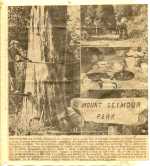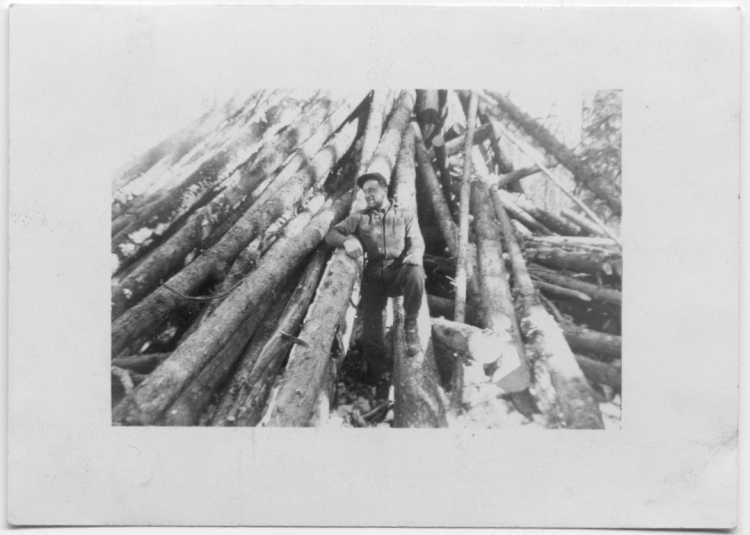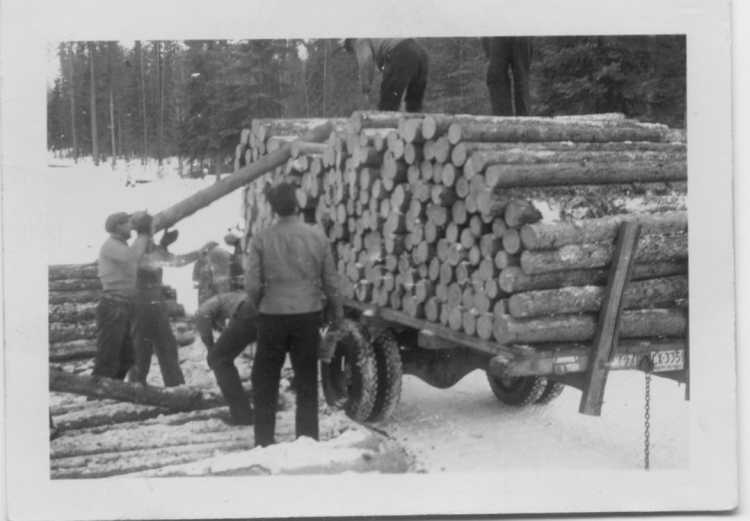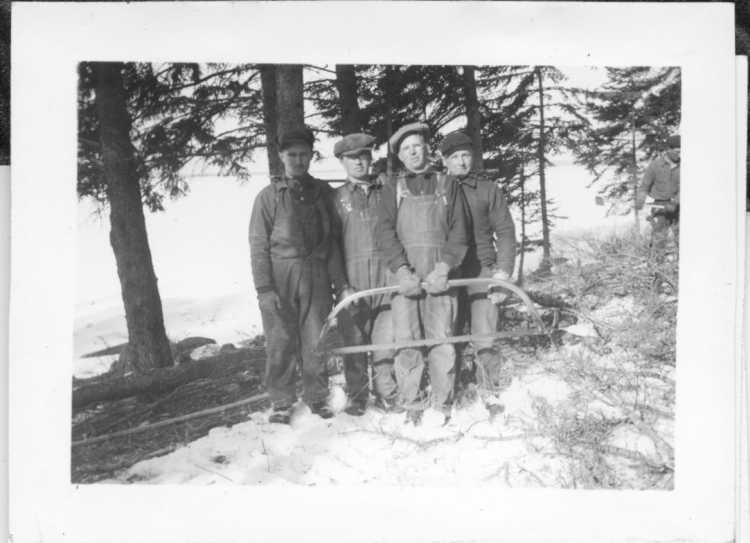Page
1 | Page 2 | Page 3 | Page
4 | Page 5 | Back
to Work Page
For
the Campbell River forest, the conscientious objectors left the
snags lie where they fell. In total, they cleared away nearly 600,000
of these dead trees. By planting the new trees among the fallen
snags, the seedlings also received shade from the hot sun while
they were young and vulnerable.
In
other forests, however, the COs used the snags for firewood or other
uses. Victor Goossen went to Banff National Park in December 1943.
“This
camp housed approximately 40 COs whose work consisted of cutting
down dry trees that had died in an earlier forest fire. These
trees were cut into different lengths, depending on the thickness
of the tree. Trees over 10” or 12” [25 - 30 cm] were cut into
firewood and hauled away to be sold. Smaller diameter trees were
cut into 8'-16' [20 – 40 cm] lengths, to be used as mine props
in underground coal tunnels to keep the ceiling from falling in.
These were hauled to Drumheller, Alta. [ASP, 93]
The
COs working in Canada's national parks produced 808,405 linear feet
of mine props. Laid end to end, these props would stretch 246 km.
The COs were part of a much larger workforce who stayed in Canada
instead of going to war. Over 250,000 men eligible for army service
stayed in Canada instead of fighting to provide the country with
essential services. Without pit props and without firewood, mines
would shut down and people wouldn't be able to heat their houses.
The government acknowledged that this was valuable service. COs
were not paid what their labour was worth. Most of them were happy
to make this sacrifice.
 |
| COs working in Mount Seymour Park. David Jantzi far
left. |
 David Jantzi felt that working at sang falling (clearing dead trees)
tree planting, and firefighting were important task and contributions.
David Jantzi felt that working at sang falling (clearing dead trees)
tree planting, and firefighting were important task and contributions.
 |
 |
 |
Jake Krueger standing next to a pile of
logs |
Loading mining pit props |
Four COs posing with a saw at Clear Lake
|
Abram
J. Thiessen recalls that a logger who was not a CO might get paid
twenty or thirty times as much.
“Our
camp was situated 12 miles southwest of Campbell River in an area
where a very large fire had burned out many square miles of forest
in 1938 which was four years before we arrived. For miles in all
directions our eyes could see the destruction as a result of that
fire. What remained were soot blackened “snags” as they were called.
These ranged from six feet high stumps to two hundred feet giants.”
“When
finally we received the proper boots we were ready to begin our
work which consisted of cutting down these fire damaged trees,
now called snags. Before the war this work had been done by experienced
loggers or fellers but most of them had either joined the armed
forces or found other better paying employment. All the work had
been on a piecework basis. Forestry employees called scalers [measured]
the diameter of the stumps and so determined the square inches
cut in any given day. [This] determined the amount of money earned.
As you might know we COs earned 50 cents per day plus food and
lodging. The pieceworkers by dint of hard work and long days had
earned as much as twelve to fifteen dollars per day. We heard
of some that had up to twenty in one day. Now we laugh at that
sum but in the late thirties and early forties it was a very high
income.” [ASM, 30-49]
Page
1 | Page 2 | Page 3 | Page
4 | Page 5 | Back
to Work Page |


